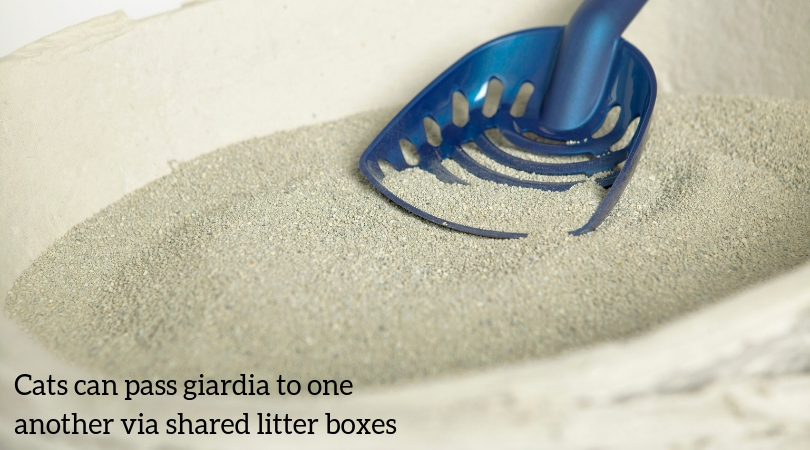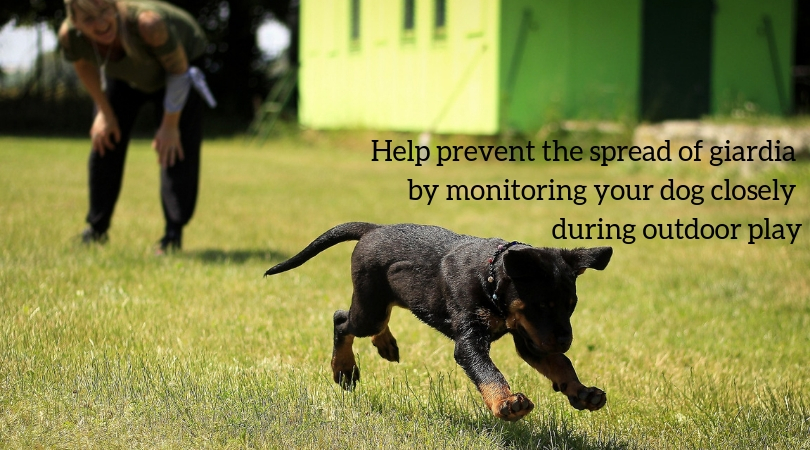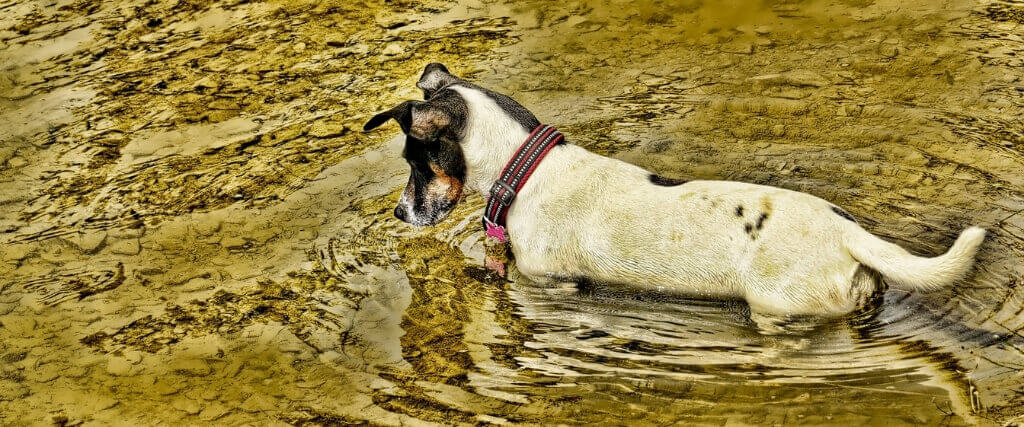It’s possible you’re not familiar with this nasty parasite or think it’s limited to foreign countries. However, giardia is a common intestinal parasite throughout the U.S. as well as abroad. Mud puddles, unclean rivers, even contaminated grass can all spread this infection.
According to the Companion Animal Parasite Council (CAPC), “Giardia is passed in the feces of animals in the form of a cyst that is resistant to many environmental extremes. These cysts are scattered through the environment in feces or fecal-contaminated water. These cysts are infectious when passed, and upon ingestion by the next host, the encysted trophozoites emerge from the cysts in the intestinal tract. Within the intestine, the trophozoites feed and multiply. Some trophozoites will then form a cyst wall around themselves, and those cysts will be passed in the feces to continue the cycle.”
Now, the existence of the parasite isn’t a problem, but if your dog or cat ingests it, they can get sick.
How Can Your Dog or Cat Get Giardia?
The most common method of contracting giardia is by eating or drinking something contaminated with feces. For example, your pet can get giardia by drinking feces-contaminated water, eating grass, chewing sticks, or even eating poop. It’s gross, but we know they do it!
Once the parasite is in your pet’s system, it can be spread to other animals. So if you have a multi-pet household, you’ll want to contact your veterinary team and seek treatment right away. And yes, cats are susceptible as well. If you have cats who share litter boxes, that’s one way they can pass it to one another.

What Are the Symptoms of Giardia?
Sometimes, your dog or cat seems asymptomatic (not showing symptoms); however, unexplained diarrhea, weight loss, and/or an unhealthy coat can be hints that something is wrong.
“The parasite inhibits your dog’s ability to properly absorb nutrients, water, and electrolytes, which leads to diarrhea and weight loss. The diarrhea can be intermittent or continuous, especially in puppies, and failure to diagnose and treat the disease can lead to severe weight loss and even death in extreme cases. The disease is particularly dangerous for puppies, senior dogs, and dogs with compromised immune systems.” (Source)
How Do You Treat Giardia?
Your veterinarian will need at least one stool sample to review under a microscope.
“Giardia cysts can be identified in a fecal smear under a microscope. Since cysts are shed in stools sporadically, several different fecal samples may be needed for a positive identification. Special stains may be needed, as the organism can sometimes be elusive.” (Source)
There are a few medications that your veterinarian may prescribe, though Metronidazole (Flagyl) or Fenbendazole are two of the most common.
How Can You Prevent Giardia?
No one wants their pet to be sick, yet it can be tough to guard against an illness like giardia. We recommend precautions like always having fresh water available for your pet and picking up after them quickly so they (or other pets) don’t eat the poop.

Also, try to monitor them when you’re outside. We know that dogs, especially, explore the world through their mouths. Forests, fields, and dog parks sometimes offer less than sanitary opportunities, so keep an eye on them as best you can.
As you can see, giardia can cause your pet to feel sick and low-energy, so if you see these symptoms, it's important to get to the veterinarian for a diagnosis. Your veterinarian can help determine what the culprit is, so if you have concerns about giardia or other parasites, contact us right away!

